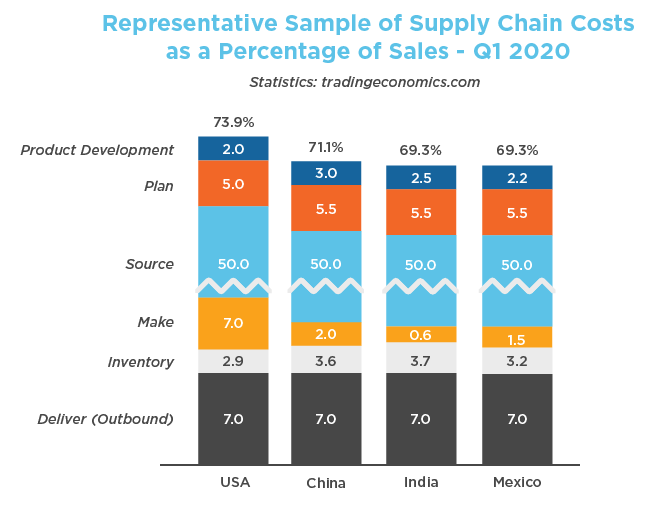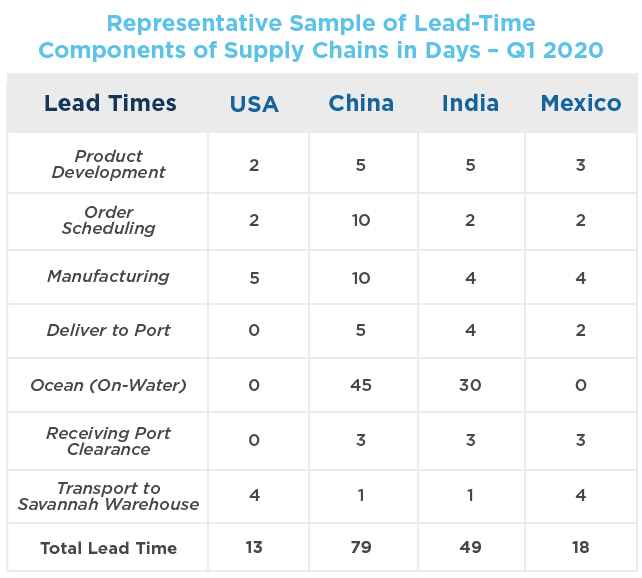The Three-Pronged Strategy Companies Need to Strengthen Their Supply Chains
The COVID-19 pandemic has raised a critical question: Why doesn’t the United States have the capacity required to manufacture many products for which there is a sudden urgent need? The challenge lies in how modern supply networks are structured and the operational metrics applied to manufacturers. The United States and other advanced industrial economies have evolved a highly efficient and productive product and delivery system that provides them with a vast array of products at relatively low costs. But inherent in that system are dependencies and expectations that the pandemic has called into question.
Globalization has been the mantra for the last three decades, causing a major manufacturing shift to Chinese and other Asian low labor cost companies to drive economic advantage. US companies with supply chains originating in China are the most adversely impacted by imbalances in demand and supply and will continue to face production, inventory, customer service, and logistics challenges long after the world economies begin to reopen due to extended end-to-end order lead times. As global conglomerates rethink their end-to-end supply chain operating models, they will need to take into consideration a three-pronged strategy to address overall supply chain cost, agility, and risk resilience.
Supply chain cost
Supply chains have become increasingly complex as companies leverage low-cost manufacturing labor many miles away from where the finished product is ultimately consumed. As low-cost countries (LCC) become more affluent, the labor arbitrage that initially pushed manufacturing to LCCs is reduced and provides a lower cost advantage when taking into consideration the increased inventory in the pipeline and transportation costs. The graph below compares end-to-end supply chain costs between the United States and three LCCs: China, India, and Mexico.

As the graph shows, manufacturing labor costs provide a significant cost advantage (7% of sales if manufactured in the United States vs. less than 1% if manufactured in India). However, other costs, such as planning coordination, cost of capital tied in inventory, warehouse management, and product development in countries other than the United States reduces this cost advantage. As companies rethink their supply chains from a sourcing and manufacturing standpoint and seek alternatives to China, they should consider slowly transitioning manufacturing functions back to the United States. Slow, because adding 4-5% in immediate extra manufacturing costs by bringing production to the United States could substantially lower their profitability. This transition is necessary as companies prepare for unforeseeable disruptions in the future.

Agility
To take advantage of the labor arbitrage and the economic advantage provided by LCCs, the end-to-end supply chain response times have slowed down considerably. The table below shows the response time of supply chains of US companies with sourcing and manufacturing from other LCCs.
The end-to-end order lead time differences between the United States and China and India are 66 and 36 days, respectively. The lead time difference between the United States and Mexico sourcing/manufacturing is understandably much lower at 5 days. The longer the time lag between demand and supply, the less agile a company is when reacting to changes in demand and supply. Companies that begin shifting their production (and therefore dependence) from China in 2019 due to trade wars have been better prepared to deal with COVID-19 related disruption. An increase in lead time results in increased inventory levels, inventory obsolescence, and potential loss in sale due to stock shortages that cannot be quickly mitigated. To increase overall agility of supply chains, companies should look at other options, such as manufacturing in India or Mexico or even the United States, depending on the cost benefit analysis and ability to react quickly to future demand and supply imbalances.
Risk Resilience
COVID-19 and recent geopolitical trade wars have brought the risk of supply chains to the forefront, necessitating a reformulation of overall supply chain strategy. In addition, the inability of US companies to protect their technological advantage by manufacturing their products in China adds a substantial risk to sustaining their competitive position. While other countries, such as India and Mexico, present similar risk to some extent, the infringement of technology is less prevalent in these countries as in China.
US companies should start strengthening their supply chains by moving them to countries with lower geopolitical risk, or bringing them closer to home to Mexico or even to the United States. To do so, they need to create a phased approach. Their immediate priority should be to move operations from China to a country with similar or lower manufacturing costs but a more conducive geopolitical landscape that is less prone to disruption risk due to trade wars and political conflict with the US. In the meantime, companies should utilize emerging technology to design processes in the United States that are automated and require less labor to operate thus increasing labor productivity. This will have the impact of reducing the labor arbitrage economics as compared to LCCs and allow US companies to project their product and process technology.

